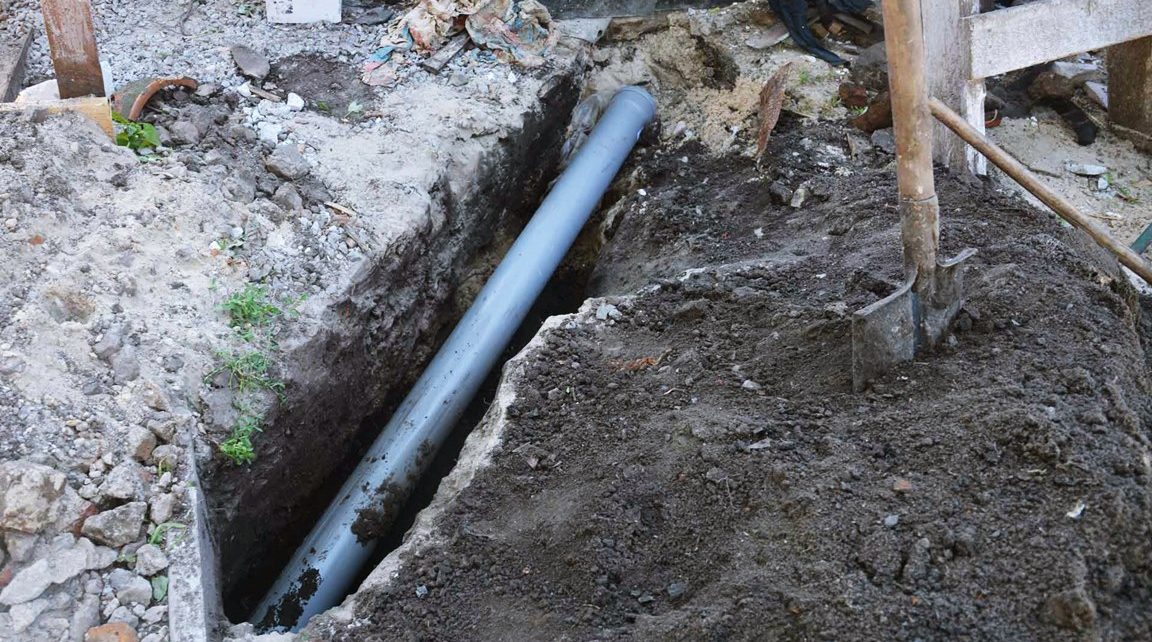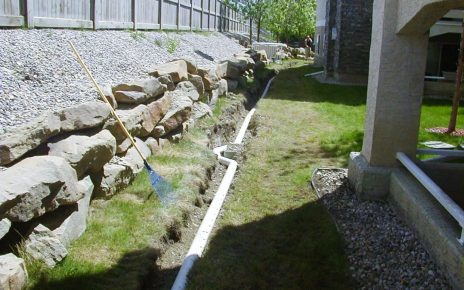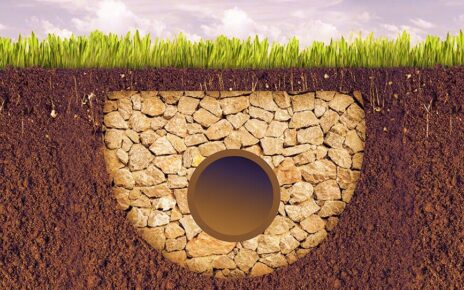Maintaining a healthy and functional footing drain system is crucial for the overall well-being and longevity of your property. Regular cleanout of your footing drain ensures proper water drainage, prevents water accumulation, and safeguards your foundation from potential damage. In this post, we will discuss the significance of footing drain cleaning, present a step-by-step guidance on how to clean your footing drains, and offer prevention measures.
Table of Contents
Introduction to Footing Drain Cleanout
The footing drain is an essential component of your property’s drainage system. It is designed to divert water away from the foundation, preventing water infiltration and potential structural damage. Over time, footing drains can become clogged with debris, dirt, and roots, impeding their functionality. Regular cleanout of the footing drain is necessary to ensure proper water flow and prevent water-related issues.
Importance of Footing Drain Maintenance
Maintaining a clean and functional footing drain offers numerous benefits. Firstly, it helps to prevent water accumulation around the foundation, which can lead to basement flooding, moisture issues, and even structural damage. By regularly cleaning out the footing drain, you ensure that water is effectively redirected away from your property.
Furthermore, a well-maintained footing drain contributes to the overall health of your foundation. Excessive moisture near the foundation can weaken the structural integrity of your property, leading to costly repairs. By keeping the footing drain clean, you minimize the risk of such damage, preserving the stability of your home or building.
Understanding Footing Drain Systems
Before proceeding with the cleanout process, it is important to familiarize yourself with the components of a footing drain system. A typical footing drain system consists of a series of perforated pipes placed alongside the foundation. These pipes collect groundwater and direct it away from the building.
Additionally, footing drains are usually equipped with cleanout access points, which allow for easier maintenance and cleaning. These access points are strategically placed to provide entry to the drain system and remove any blockages or accumulated debris.
Signs of a Clogged Footing Drain
It is essential to be aware of the signs indicating a clogged footing drain. By identifying these signs early on, you can take timely action and prevent potential damage. Some common indicators of a clogged footing drain include:
- Water seepage or flooding in the basement
- Persistent musty odor in the basement
- Cracks in the foundation or walls
- Soggy or swampy areas around the foundation
- Excessive moisture or mold growth in the basement
If you notice any of these signs, it is advisable to inspect and clean your footing drain promptly.
Tools and Equipment Needed for Footing Drain Cleanout
To clean your footing drain effectively, you will need the following tools and equipment:
- Flashlight: A reliable flashlight will help you navigate dark areas and inspect the drain system.
- Gloves and protective clothing: Ensure you wear gloves and protective clothing to safeguard yourself from potential dirt and debris.
- Garden hose: A garden hose with a nozzle attachment will be used to flush out the footing drain.
- Drain snake or auger: A drain snake or auger is necessary for removing stubborn blockages from the drain.
- Bucket or container: You’ll need a container to collect any debris or water that may come out during the cleanout process.
Now that you’ve got the appropriate gear, let’s get started on cleaning your footing drain step by step.
Step-by-Step Guide for Cleaning Footing Drains
Step 1: Locate the Cleanout Access Point
Begin by locating the cleanout access point of your footing drain. These access points are typically small pipes protruding from the ground near the foundation. You may find them marked with a cap or cover, which can be removed for cleaning purposes.
Step 2: Clearing Debris from the Cleanout Access Point
Remove the cap or cover from the cleanout access point, and use a flashlight to inspect the opening. Remove any visible debris from the entry point, such as leaves, twigs, or dirt. This ensures unobstructed access to the footing drain.
Step 3: Flushing the Footing Drain with Water
Attach a garden hose with a nozzle to a water source and insert it into the cleanout access point. Turn on the water and allow it to flow into the footing drain. The water pressure will help dislodge and flush out any loose debris or sediment present in the drain.
Continue flushing the footing drain for several minutes or until the water runs clear. This step ensures that the drain is thoroughly cleaned and any remaining blockages are removed.
Step 4: Using a Drain Snake to Remove Blockages
If you encounter stubborn blockages that the water flush couldn’t clear, it’s time to utilize a drain snake or auger. Insert the drain snake into the cleanout access point and carefully navigate it through the drain, pushing it forward gently.
Rotate the snake as you push it further into the drain, allowing it to catch and dislodge any clogs along the way. If you encounter resistance, rotate and maneuver the snake back and forth to break up the blockage.
Continue the process until you have maneuvered the drain snake through the entire length of the footing drain. Be cautious not to apply excessive force, as it may damage the pipe.
Step 5: Inspecting and Maintaining the Footing Drain
Once you have cleared the blockages, inspect the cleanout access point and the drain itself. Ensure there are no remaining debris or signs of damage. If any cracks or significant issues are detected, it is advisable to seek professional assistance.
To maintain the health of your footing drain, periodically inspect it for signs of clogging or damage. Clean the cleanout access points regularly and consider professional maintenance every few years to ensure optimal functionality.
Tips for Preventing Future Footing Drain Issues
While regular cleanout is vital, there are preventive measures you can take to minimize the risk of future footing drain issues. Consider the following tips:
- Maintain gutters and downspouts: Ensure that gutters and downspouts are clear of debris, allowing water to flow freely away from your property.
- Grade the soil away from the foundation: Ensure the ground slopes away from your home or building to prevent water accumulation near the foundation.
- Install a sump pump: A sump pump can help remove excess water from the basement, reducing the load on the footing drain system.
- Avoid planting trees near the foundation: Tree roots can infiltrate and damage the footing drain system. Plant trees at a safe distance from the foundation.
- Regularly inspect and clean the footing drain: Perform routine inspections and cleanouts to maintain the optimal functionality of the footing drain.
Hiring Professionals for Footing Drain Cleanout
While cleaning your footing drain can be a DIY project, it is essential to recognize when professional assistance is necessary. If you encounter complex issues, extensive damage, or if you are unsure about performing the cleanout yourself, it is recommended to hire experienced professionals. They have the expertise and specialized equipment to handle intricate footing drain problems effectively.
Footing Drain Cleanout FAQs
How frequently should I clean the footing drain?
Cleaning your footing drain at least once every two to three years is suggested. However, if you discover indicators of clogging or water-related concerns, you should complete a cleanout as soon as possible.
Can I clean my footing drain with chemical drain cleaners?
Chemical drain cleaners should not be used for footing drain cleaning. These cleansers might be damaging to the pipes because they are harsh on them. Follow the steps provided in this article to ensure a safe and effective cleanout.
Is it necessary to contact professionals to clear out the footing drain?
In most circumstances, you can clean your own footing drain. However, if you find significant complications or are unclear about the process, it is preferable to get professional assistance.
Can a clogged footing drain lead to issues with the foundation?
Yes, a clogged footing drain can result in water accumulating around the foundation, which can cause problems with moisture and perhaps jeopardize the structural integrity of the foundation.
What should I do if, after cleaning the footing drain, I discover fractures in my foundation?
It is advised that you speak with a qualified foundation repair specialist if you see cracks or other severe damage to your foundation. They are able to determine how serious the problem is and offer suitable solutions.
Remember, proactive maintenance and regular cleanout of your footing drain are key to preserving the stability and longevity of your property.
Footing Drain Cleanout, Regular cleanout of your footing drain is crucial for maintaining a healthy and functional drainage system. By following the step-by-step guide outlined in this article, you can effectively clean your footing drain and prevent potential water-related issues. Remember to be proactive in inspecting and maintaining your footing drain to minimize the risk of clogs and damage. Taking care of your footing drain ensures the long-term stability and integrity of your property.





Thanks for the reminder that drain cleaning is also essential for proper basement maintenance. I’d like to find a good drain cleaning service soon because I’m thinking about finding a good way to make it easier to turn my basement into an extra bedroom. I want to get that sorted out because I will be having a friend crash at my place for a few months due to some complications with his accommodations.